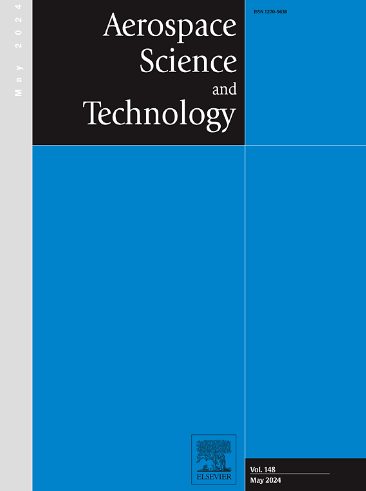An aluminum agglomeration model based on realistic pocket distribution via microcomputed tomography
IF 5
1区 工程技术
Q1 ENGINEERING, AEROSPACE
引用次数: 0
Abstract
The condensed combustion products (CCPs) resulted from aluminum agglomeration significantly affect the operation and safety of solid rocket motor, so it is essential to create a precise agglomeration model to predict the size of the CCPs of aluminized solid propellant. To accomplish this, high-precision microcomputed tomography (micro-CT) scanning was employed to obtain the quasi-three-dimensional structure of the propellant. The distribution of the ammonium perchlorate (AP) pockets was recognized via artificial intelligence (AI) method. The results revealed that the pocket size was mainly influenced by the AP grade. As the fraction of the coarse AP fraction declined from 43.1 % to 23.1 %, the average pocket diameter reduced from 388.91 to 68.23 μm. Size distribution predictions were subsequently performed for the agglomerations based on the pocket model theory. The equation relationship between agglomeration coefficient and propellant formulation was presented and corrected through mathematical fitting. The proposed agglomeration model was validated using the CCPs collection experiments of six aluminized propellants at 7 MPa. The agglomeration model produced an average particle size prediction error of <9.8 %, and the goodness of fit of the agglomerate distribution was >0.85. Subsequent analysis indicated that the agglomerate size mainly depended on the percentage of coarse AP, the burn rate, and the size distribution of raw aluminum particles. The present model is expected to offer a new way to achieve the accurate prediction of solid propellant agglomeration behaviors.
基于微计算机断层扫描现实口袋分布的铝结块模型
铝团聚产生的凝结燃烧产物(CCPs)会严重影响固体火箭发动机的运行和安全,因此必须建立精确的团聚模型来预测铝化固体推进剂 CCPs 的大小。为此,我们采用了高精度微计算机断层扫描(micro-CT)技术来获取推进剂的准三维结构。通过人工智能(AI)方法识别了高氯酸铵(AP)口袋的分布。结果表明,口袋大小主要受高氯酸铵等级的影响。随着粗粒 AP 的比例从 43.1% 降至 23.1%,口袋的平均直径从 388.91 μm 降至 68.23 μm。随后,根据口袋模型理论对团聚体的粒度分布进行了预测。提出了聚结系数与推进剂配方之间的方程关系,并通过数学拟合进行了修正。利用六种铝化推进剂在 7 兆帕下的 CCPs 收集实验,对提出的聚结模型进行了验证。结块模型产生的平均粒度预测误差为 9.8%,结块分布的拟合度为 0.85。随后的分析表明,结块粒度主要取决于粗 AP 的百分比、燃烧速率和原铝颗粒的粒度分布。本模型有望为实现固体推进剂团聚行为的精确预测提供一条新途径。
本文章由计算机程序翻译,如有差异,请以英文原文为准。
求助全文
约1分钟内获得全文
求助全文
来源期刊

Aerospace Science and Technology
工程技术-工程:宇航
CiteScore
10.30
自引率
28.60%
发文量
654
审稿时长
54 days
期刊介绍:
Aerospace Science and Technology publishes articles of outstanding scientific quality. Each article is reviewed by two referees. The journal welcomes papers from a wide range of countries. This journal publishes original papers, review articles and short communications related to all fields of aerospace research, fundamental and applied, potential applications of which are clearly related to:
• The design and the manufacture of aircraft, helicopters, missiles, launchers and satellites
• The control of their environment
• The study of various systems they are involved in, as supports or as targets.
Authors are invited to submit papers on new advances in the following topics to aerospace applications:
• Fluid dynamics
• Energetics and propulsion
• Materials and structures
• Flight mechanics
• Navigation, guidance and control
• Acoustics
• Optics
• Electromagnetism and radar
• Signal and image processing
• Information processing
• Data fusion
• Decision aid
• Human behaviour
• Robotics and intelligent systems
• Complex system engineering.
Etc.
 求助内容:
求助内容: 应助结果提醒方式:
应助结果提醒方式:


